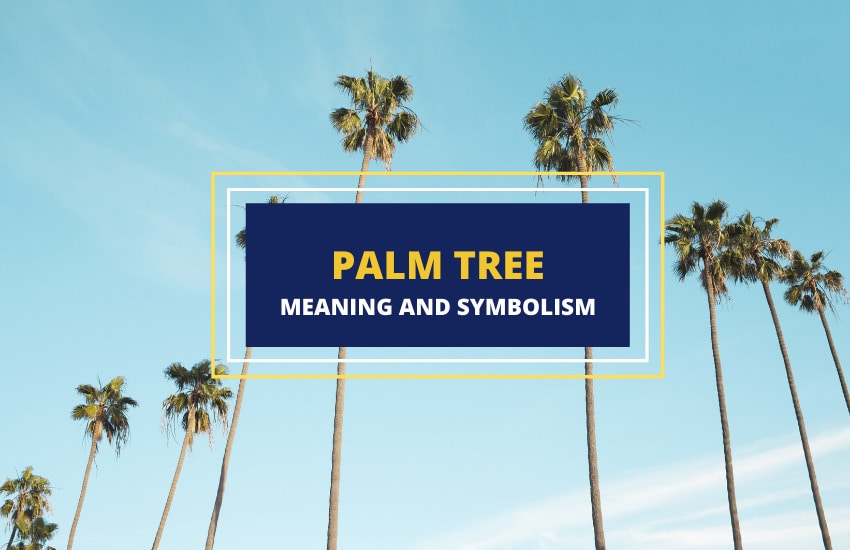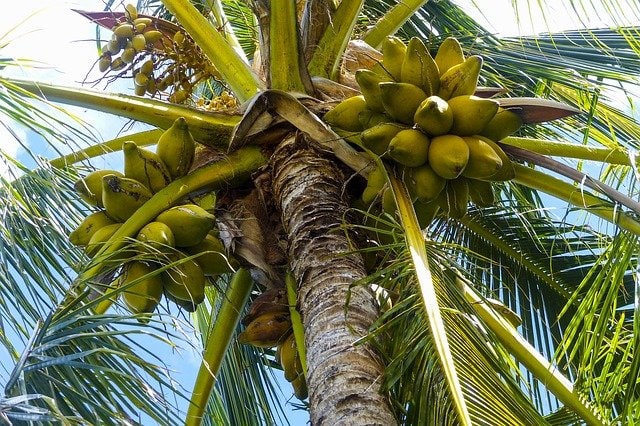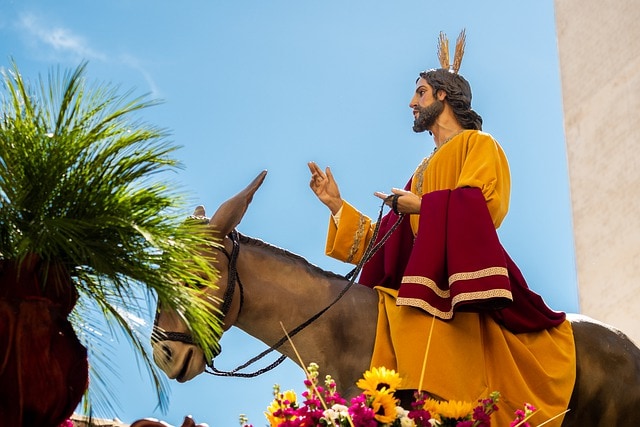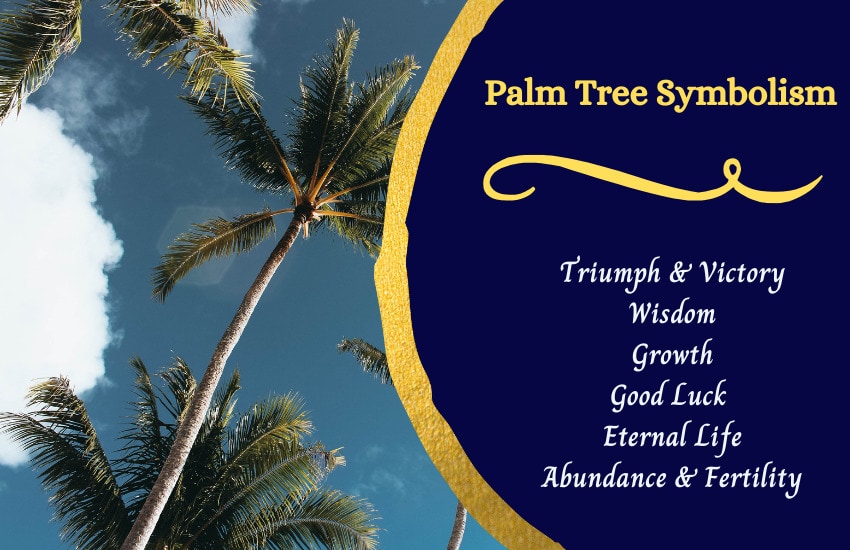
Table of Contents
When thinking of palm trees, what usually comes to mind are vacation destinations and beautiful islands. However, there’s a lot more to palm trees than meets the eye.
Palm trees have been around for centuries and can be found in the coastal regions of the world. Most people use products made from these trees such as cosmetics, cooking oils, lotions, jelly, wine, and biodiesel. However, not many know about the symbolic meaning of these large, evergreen plants.
Palm trees have powerful symbolism in many cultures and religions around the world. In this article, we’ll be taking a close look at the symbolism of palm trees, their significance, and their relevance today.
What Are Palm Trees?

There are over 3,000 species of palms, making them some of the most common and easily recognized plants. They thrive in tropical regions and are considered among the hardiest trees in the world as they’re resistant to most pests and diseases.
Palms, also known as the Princes of the Vegetable Kingdom, have distinctive leaves and fruits that make them easily recognizable anywhere. They have large leaves, which are shaped like feathers or fans, depending on the species.
Some palms have palmate leaves which are wide and spread out like fingers, while others have pinnate leaves, which are feather-shaped leaves that resemble tufts of hair. Most palm species also have tall, cylindrical trunks which are either smooth or have hooked prickles.
Palm trees bear different kinds of fruit that vary in size and color.
Coconuts are some of the most popular palms, with their nuts known for their nutritional benefits and distinct taste. Their hard brown shells protect the nut from damage when they fall from the tree, and the white flesh inside is used for making oil and cooking in many Asian countries. Coconut oil is considered the healthiest oil made from palms.
Palm oil can also be made from the fruit of other palm trees, some of which resemble berries and have a rind that covers a hard kernel. It’s used in manufacturing various types of beauty products and for certain culinary purposes.
The date palm is also among the most useful varieties of palm, as it offers nutritious and delicious fruits.
Palm Trees in Christianity
The palm tree holds special meaning in the Bible where it’s used as a metaphor in several verses.
In Psalm 92:12, those who are righteous were compared to palm trees. It states that righteous people shall flourish and grow ‘like palms and cedar trees in Lebanon’. In Songs 7:7-9, the palm tree is associated with victory, where getting hold of its fruit was compared to triumph.
The reason palm trees were compared to righteous men is that they have some comparable similar characteristics. Here are some of the most common traits:
- Upright Growth – Palm trees grow tall, rising towards the heavens. They do not bow down. This imagery makes a palm tree comparable to a righteous man who does not stoop and does not break his principles.
- Abundant Fruitfulness – A palm tree bears delicious and nutritious fruits that can be used as a source of food. In fact, a human can survive on palm fruits alone if need be. This draws a picture of a righteous man who also bears fruits like love and kindness that can inspire others to live a faithful and honest life.
- Flexibility – Palm trees are also extremely flexible and although they may bend in the wind, they will never break. This symbolizes a great man’s adaptability and his ability to persist even when faced with the weight of life’s problems and challenges.

Palm Sunday is an important event that’s celebrated by Christians throughout the world which shows just how important this tree is in Christianity. Commemorated on the Sunday before Easter, this event marks the beginning of the Holy Week and symbolizes the day Jesus Christ entered Jerusalem. As he rode on a wild donkey into the town, people surrounded him and paid respect by laying palm branches on the road, shouting praises to his name.
On Palm Sunday, Christians save palm branches and sing hymns in honor of Jesus. They organize huge processions where blessed palm fronds are distributed. Many churches also save the used palms and burn them into ashes, which they later use on Ash Wednesday. Some Christians also buy palm fronds that are folded into crosses and hang them in their homes to celebrate the day and to bless their home.
Palm Trees in Islamic Culture
In Islamic culture and religion, the palm tree is a highly significant symbol of rest and hospitality. The presence of palm trees growing around an oasis meant that the water was a gift from Allah.
According to the Quran, the Prophet Muhammad built his home out of palm and often leaned against palm trees as he spoke. It also states that Jesus was born under a date palm.
Palm Tree Symbolism

While palm trees hold great meaning in the Christian faith, their meaning and symbolism go far beyond that. Here are universal meanings of the palm tree.
- Triumph and Victory – In the Classical era, palm trees were used as symbols of success, much like the laurel leaf. The Romans awarded palm branches to celebrate military successes and reward those who won athletic contests. The close association between palm trees and such achievements can be seen in how the Latin word ‘palma’ became almost synonymous with victory.
- Eternal Life – In ancient Assyria, palms were considered sacred trees. Assyrians believed that a palm tree that grows beside a stream is a symbol of immortality and everlasting life. Most species of palm can live for more than a century, making them a perfect symbol of longevity.
- Abundance and Fertility – Date palms were of great economic and cultural importance around 10,000 B.C. Due to this, they can be seen featured in Mesopotamian art. In the Fertile Crescent, a region of the Middle East where the earliest human civilizations thrived, the palm tree was used to symbolize Mylitta, the Mesopotamian goddess of love and fertility. It was also regarded as a phallic symbol because of how erect it stands.
- Wisdom – Those who believe in and use Tarot cards often associate palm trees with the High Priestess, the Major Arcana card, or the second trump card in typical Tarot decks. To them, the priestess can help people understand both seen and unseen things, endowing them with the gift of wisdom and discernment.
- Growth and Success – Like most trees, a palm tree also represents growth and change. The way it steadily grows and reaches towards the sky makes it comparable to someone who rises above all challenges.
- Good Luck – Palm trees are often regarded as symbols of good luck and have been laid down in the paths of pilgrims returning from a religious journey or heroes returning home from battle. Many people wear amulets or pieces of palm fronds when traveling to unknown lands, embarking on dangerous missions, or even during important business meetings in hopes that they will attract good luck.
Palm Trees in Dreams
Seeing a palm tree in one’s dreams is a sign of prosperity and God’s blessings. It can also be a sign of opportunities that will help one to reach one’s personal goals. Many believe that dreaming of a palm tree could be their subconscious mind nudging them in the right direction, telling them to take the necessary steps to change their lives.
Some interpretations of palm trees differ depending on the context of the dream. For example, seeing a healthy palm tree is considered an omen that the dreamer will realize their goals, while a dried-up palm tree could mean that difficult times are ahead. It could be a sign that the dreamer is about to be hurt and to seek help from family and friends.
Wrapping Up
Palm trees are famous for their beauty and their delicious yet nutritious fruit. They hold a special place in many cultures and religions and have been around since ancient times. They continue to hold special, important, and powerful symbolism for many people around the world.








